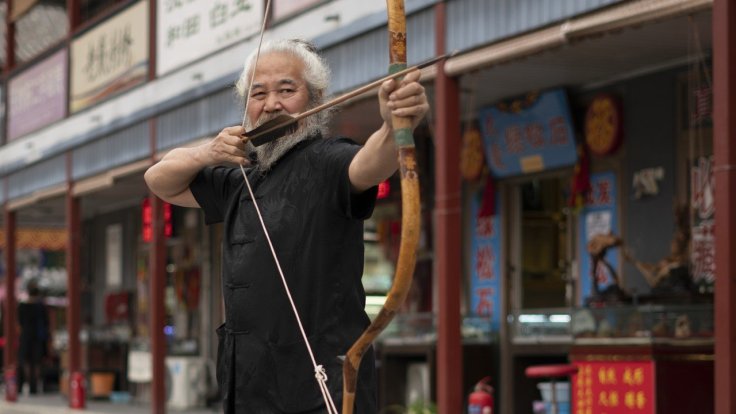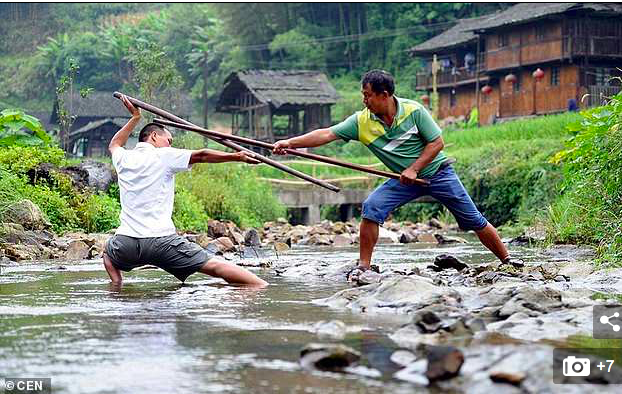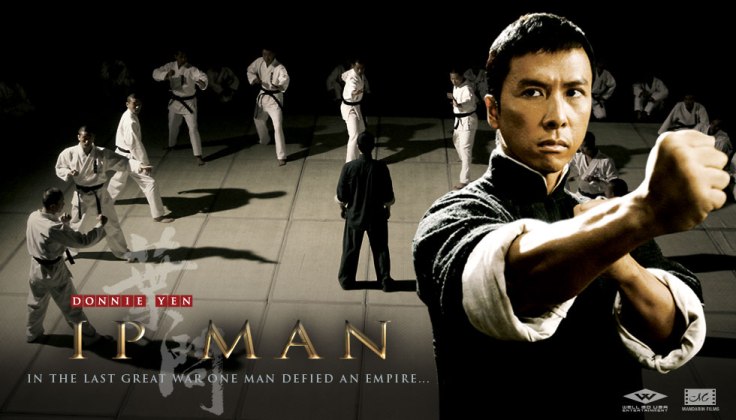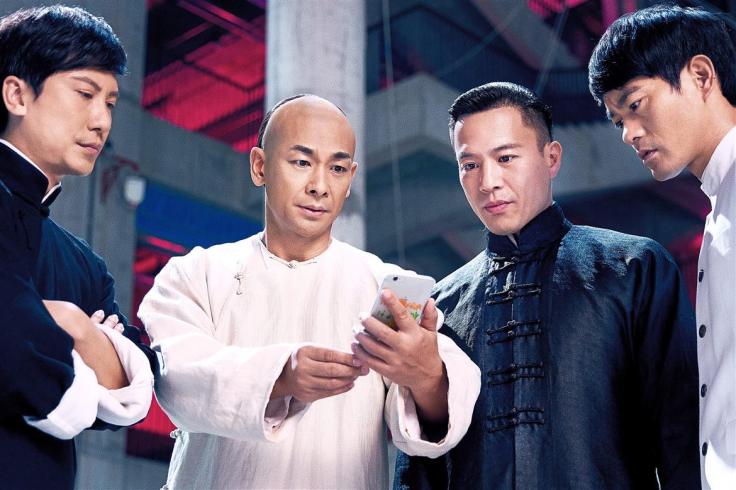Chinese Martial Arts in the News: Oct. 22 2018: Archery, Kung Fu Villages and the Lives of Detective Dee
Introduction
It has been a busy weekend, so this news update will be brief. Nevertheless, I wanted to comment on some of the more interesting stories that have been floating around. For new readers, this is a semi-regular feature here at Kung Fu Tea in which we review media stories that mention or affect the traditional fighting arts. In addition to discussing important events, this column also considers how the Asian hand combat systems are portrayed in the mainstream media.
While we try to summarize the major stories over the last month, there is always a chance that we may have missed something. If you are aware of an important news event relating to the TCMA, drop a link in the comments section below. If you know of a developing story that should be covered in the future feel free to send me an email.
Its been way too long since our last update so let’s get to the news!
News From All Over
I recently published an essay on Kung Fu Tea noting the importance of examining martial culture when trying to discern what is really happening in a given art or practice. Our first big news item really drives that point home. It starts off with a brief nod to the near extinction, and then spectacular resurrection, of traditional Chinese archery all within the space of a few decades. Of course, someone needs to be making all of the bows to supply a new generation of enthusiastic archers, and that too came very close to being lost.
In the 1950s and 60s, when the artisans of Beijing’s last seven bow-making workshops were reassigned to state collectives, a craft that had been practised for more than 3,000 years came to a sudden halt. By the mid-90s, all remaining bowyers had passed away, with the exception of Yang Wentong. Come his death, it was believed, all knowledge of traditional Han Chinese ox-horn bow making would be lost forever.
Obviously, there is a lot more to the story of the revival of China’s traditional archery. But I was still very happy to see an article (and video segment) like this in the South China Morning Post.
I was recently reading something by Paul Bowman in which he reviewed the ways that various newspapers in the UK have discussed the martial art over the years. I think that one of the phrases he applied to articles in the Daily Mail was “perpetual wide-eyed wonder.” That immediately popped into mind as I looked at their latest photo essay titled ‘Everybody was kung fu fighting’: Inside the Chinese village where all residents practise martial arts.
If memory serves we have heard about this village in Guangxi before. They seem to have some sort of communal (early morning and evening) martial arts training, but sadly this article never actually states the style. What we do get it is yet another variant of the burning of the Shaolin Temple myth, complete with a wandering survivor who takes up residence in the village, founding its current martial arts tradition. Good stuff!

At first glance our next article appeared to be a boilerplate account of the sort of educational exchange program that governments frequently sponsor. Basically, a few dozen Chinese physical education instructors were sent to the USA to visit and observe how teaching was conducted in local classes. And of course they also taught some Kung Fu to the American kids. I was surprised that the style they introduced was Five Ancestors Fist, a very important southern school. Suddenly I want to hear more!
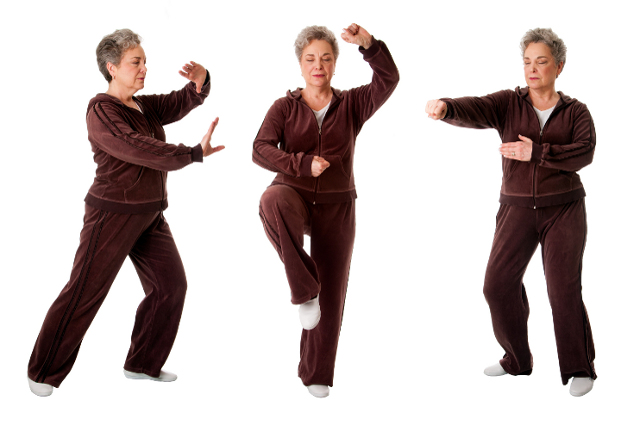
Taijiquan was one of the big winners of the last news cycle. A couple of studies had come out on the practice’s ability to build strength in older students, and this unleashed a torrent of near identical articles in several outlets. My favorite was titled “Building Strength Through Tai Chi” in the Seattle Times.
Watching a group of people doing tai chi, an exercise often called “meditation in motion,” it may be hard to imagine that its slow, gentle, choreographed movements could actually make people stronger. Not only stronger mentally but stronger physically and healthier as well.
I certainly was surprised by its effects on strength, but good research — and there’s been a fair amount of it by now — doesn’t lie.
What caught my eye about this one is that the author is actually something of a skeptic. Rather than seeing Taijiquan as a progressive exercise that can be done at many levels of intensity, the assumption seems to be that it is useful only as a sort of remedial rehabilitation program for senior citizens who are looking to build the physical capital necessary for a more “strenuous” (western style) workout. Taijiquan gets a lot of good medical press these days, but this article made me stop and wonder how common these attitudes might be in certain corners of the medical profession. Not actually understanding much about the art in question, it would be difficult for such experts to visualize what it might do for a wider range of patients.
Speaking of senior citizens doing taijiquan, Netshark had a fun video of an “Auntie” who decided to release stress during an epic two hour Golden Week traffic jam by exiting her car and practicing her solo set. Can’t find time to train? Seriously kids, no excuses.
I wasn’t quite sure how to classify the next story. It touches on a number of topics including contemporary film, ancient Chinese history and 20th century crime novels. It turns out that Detective Dee has had many careers through the ages. This is a really good article to read if you are interested in the interplay between history and popular culture. And somehow it all ends up as a series of kung fu films. I personally found this to be one of the more surprising and enjoyable articles in this month’s review.
Quick, what is your favorite martial arts film? Now what are your top 50? If you are still working on that second question Newsweek has some suggestions. Incidentally Ip Man (2008) comes in at 35. If you want to find out what they chose as #1 you will need to read the article. In addition to the list, this piece also provides a capsule overview of the genre. It should be noted that they employ a rather loose definition of what counts as a “martial arts film.”
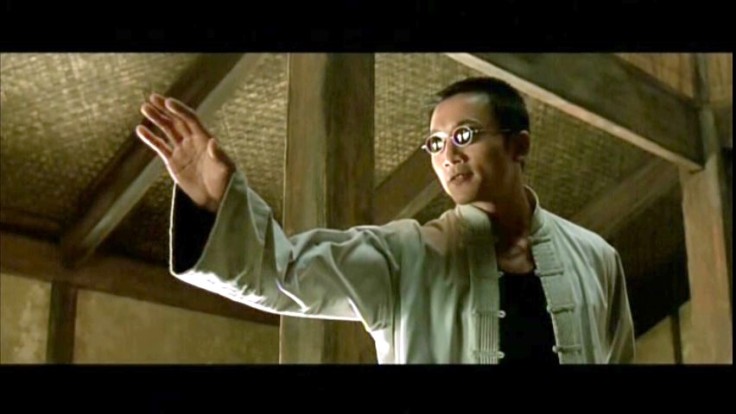
Do you remember watching the the fight with Seraph (Collin Chou) in the first Matrix sequel? I do. It might have been my favorite fight sequence in that film. And it turns out that the film’s creator originally intended for it to be carried out by Jet Li, who was very interested in the part. But in a recent interview he went into more detail as to why he ultimately turned it down. It seems that the film’s producers were interested in capturing more than just his on screen performance. They were looking to use motion capture technology to digitally record Jet Li’s movements and build some sort of database.
“I realized the Americans wanted me to film for three months but be with the crew for nine,” Li recently mentioned during a Chinese talk show appearance. “And for six months, they wanted to record and copy all my moves into a digital library. By the end of the recording, the right to these moves would go to them.”
I thought this story was interesting as there are many projects (in the commercial, scholarly and non-profit sectors) that are digitally cataloging the movements of various martial arts masters. Some of these archives are used to produce films and video games, and other go into cultural institutions. Jet Li’s story is revealing as it illustrates some issues with what happens to all of this intellectual property. Are we simply recording for posterity something that is communally owned (an unchanging folk tradition)? Or are we instead attempting to capture a effervescent moment of performance by an individual artist who holds a unique IP claim to their own interpretation of the work. Li seems to have decided that the situation was more the latter and, in his case, walked away from the film. This story is all just a footnote in the history of the Matrix, but it raises interesting ethical and theoretical questions for students of martial arts studies.
So long as we are on the subject of film, I should mention that there is one upcoming movie that I very much want to see. The central premise of the “Kung Fu League” is a fantasy team-up between some of the genera’s greatest characters, Wong Fei Hung, Huo Yuan Jia, Ip Man and Chen Zhen. Clearly its a gimmick, but I am genuinely interested to see how figures from different eras and niches within the kung fu universe are made to address each other. This seems like the perfect time for some inter-textual comedy and reflection on the development of the genre. It will be interesting to see what the director ultimately does with it.

The next couple of stories step back from an exclusive focus on the Chinese martial arts. Our first piece is a discussion in the Japan Times of Alexander Bennett’s latest book, Japan: The Ultimate Samurai Guide. Or maybe it should really be titled “an insider’s guide to surviving in the world of the Japanese martial arts.”
You’d be hard-pressed to find someone who hasn’t, at least momentarily, considered joining a martial arts club upon moving to Japan. However, comparatively few actually take the plunge. One of the biggest hurdles is that clubs can seem to be worlds unto themselves, inaccessible to non-Japanese, even those with fluency in the language. Knowing where to start, especially if you have no previous martial arts experience also puts up barriers: Which is the right martial art for you? What should you look for in a teacher? How can you hope to compete when everyone in the club already seems to have a black belt?
This is where “Japan The Ultimate Samurai Guide,” authored by longtime kendo practitioner Alexander Bennett, hopes to step in, providing answers to some of these questions from the perspective of an insider. The book is part encyclopedia of martial arts — a historical resource tracking the evolution of Japanese martial arts over the last millennium — and part present-day guide to surviving in the world of budō and, more generally, in Japan.
This all sounds very interesting. I really enjoyed Bennett’s work on the history of Kendo, and he is well positioned to write a popular yet highly informed guide to the wider world of Japanese martial arts. I suspect that this one will end up on my Christmas list.

And now for a few stories touching on one of my personal research areas which seems to be getting a lot more exposure in the news lately. First off, a local TV channel visited the lightsaber class that I run here in Ithaca. You never know how these things will go, but I thought that the final story came out quite nicely. Are you interested in what lightsaber combat might look like if approached as a traditional martial art? If so you can check out the full story here.
Of course, that is not the only version of lightsaber combat that you will find. Lots of people get into the practice because they are looking for a fast paced combat sport where they don’t have to invest years in martial arts training to do something that they enjoy. This recent report on the Nerdist followed one individual’s journey to a “full contact” saber tournament held in Las Vegas (where else). Its actually quite an interesting piece as it visits a few different corners of the “combat sport” side of the lightsaber community.
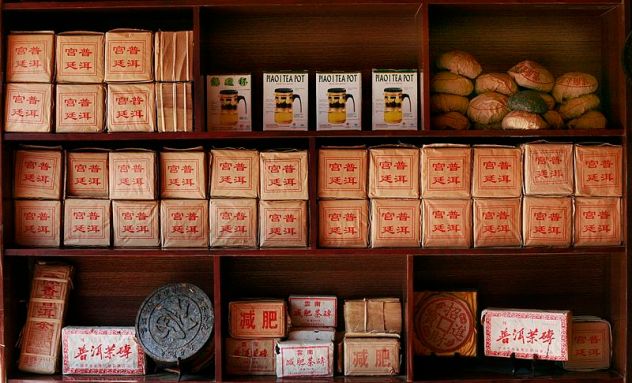
Kung Fu Tea on Facebook
A lot has happened on the Kung Fu Tea Facebook group over the last month. We looked at antique weapons, pontificated about the value of seminars, and learned what happens when Capoeira meets Kung Fu! Joining the Facebook group is also a great way of keeping up with everything that is happening here at Kung Fu Tea.
If its been a while since your last visit, head on over and see what you have been missing!

